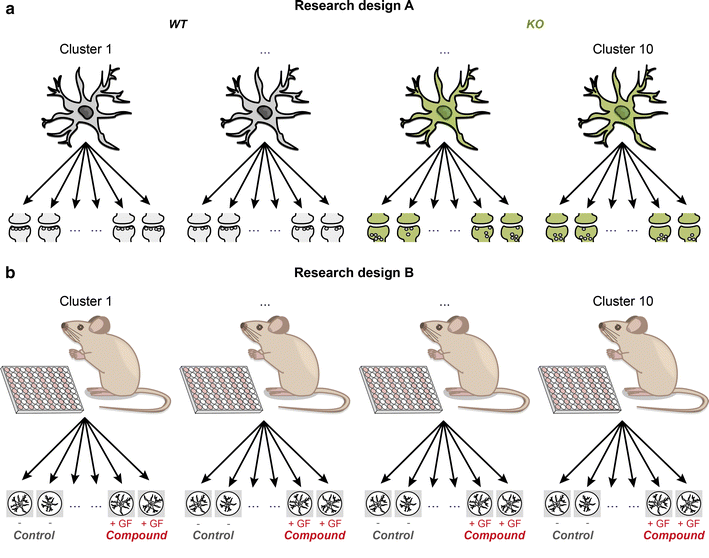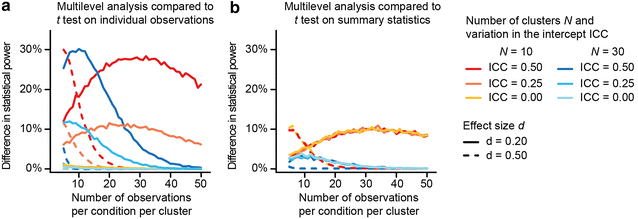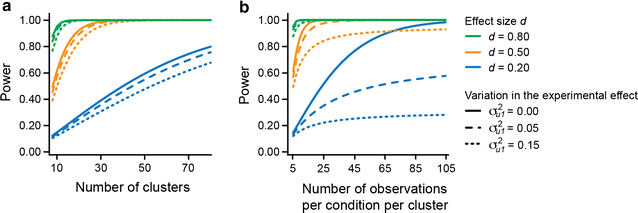Multilevel analysis quantifies variation in the experimental effect while optimizing power and preventing false positives
- PMID: 26685825
- PMCID: PMC4684932
- DOI: 10.1186/s12868-015-0228-5
Multilevel analysis quantifies variation in the experimental effect while optimizing power and preventing false positives
Abstract
Background: In neuroscience, experimental designs in which multiple measurements are collected in the same research object or treatment facility are common. Such designs result in clustered or nested data. When clusters include measurements from different experimental conditions, both the mean of the dependent variable and the effect of the experimental manipulation may vary over clusters. In practice, this type of cluster-related variation is often overlooked. Not accommodating cluster-related variation can result in inferential errors concerning the overall experimental effect.
Results: The exact effect of ignoring the clustered nature of the data depends on the effect of clustering. Using simulation studies we show that cluster-related variation in the experimental effect, if ignored, results in a false positive rate (i.e., Type I error rate) that is appreciably higher (up to ~20-~50 %) than the chosen [Formula: see text]-level (e.g., [Formula: see text] = 0.05). If the effect of clustering is limited to the intercept, the failure to accommodate clustering can result in a loss of statistical power to detect the overall experimental effect. This effect is most pronounced when both the magnitude of the experimental effect and the sample size are small (e.g., ~25 % less power given an experimental effect with effect size d of 0.20, and a sample size of 10 clusters and 5 observations per experimental condition per cluster).
Conclusions: When data is collected from a research design in which observations from the same cluster are obtained in different experimental conditions, multilevel analysis should be used to analyze the data. The use of multilevel analysis not only ensures correct statistical interpretation of the overall experimental effect, but also provides a valuable test of the generalizability of the experimental effect over (intrinsically) varying settings, and a means to reveal the cause of cluster-related variation in experimental effect.
Figures





References
Publication types
MeSH terms
Substances
LinkOut - more resources
Full Text Sources
Other Literature Sources

